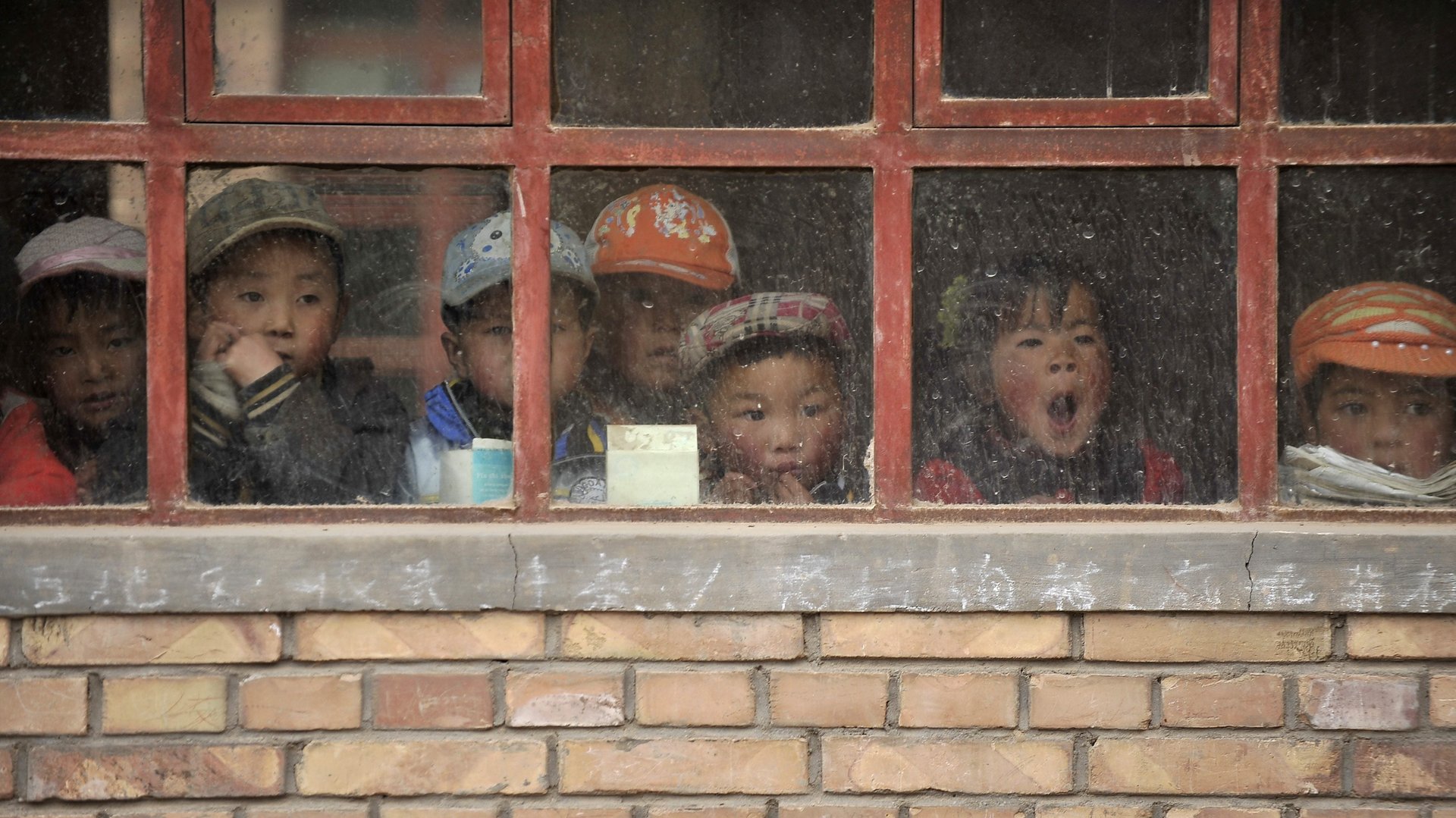China’s rapid urbanization has caused nearly three-quarters of its rural schools to shut down
In a crumbling building in the mountainous region of China’s Youyang County, Yang Jinhua, is determined to keep his school open—even though he only has two students.


In a crumbling building in the mountainous region of China’s Youyang County, Yang Jinhua, is determined to keep his school open—even though he only has two students.
In rapidly urbanizing China, rural schools like this are fast becoming few and far between. Enrollment in remote village schools has been plummeting, and “sparrow schools,” as the tiny schools serving ever-shrinking populations in the Chinese countryside are called, are struggling to stay open. To keep his school functioning, Jinhua now has to work as a teacher, cook, and caretaker for the two students left.
Until 1953, over 85% of China’s population was rural. But as China’s economy took off in the 1970s, factories opened up along the coasts, and the government lifted restrictions about where citizens could live. Over the next few decades, hundreds of millions of people moved to the cities. Between 1982 and 2015, China’s urbanization rate rose from 21% to 56%. In 2015 (the most recent year for which data is available) nearly 169 million rural workers migrated to cities in China.
In 2001, in response to growing urbanization and emptying village schools, the Chinese government launched a campaign to close remote village schools and pool resources in centralized schools located in towns. In the years following, rural schools began to shut down at an alarming rate. Between 2000 and 2015, nearly three-quarters of all rural primary schools—more than 300,000 total—were permanently shuttered, according to the Economist.
For those Chinese students left behind in rural villages, this has meant access to quality education has become scarce. The New York Times reports that the approximately 60 million “left-behind” children in rural schools, who live with their grandparents in villages whiles their parents migrate to big cities looking for work, are at a huge educational disadvantage compared to their urban peers. While 70% of students in cities attend senior high school, fewer than 10% of rural students make it that far.
For some children, the nearest school is often hours away on foot with no school bus service, making it impossible for them to attend. Students who want to continue their education are forced to board at the schools, where conditions are harsh and infrastructure is lacking; boarding students are often not even provided even three meals a day. And because of how few schools there are now, many are overcrowded, with too many students and too few resources and teachers. In fact, these larger schools are so cramped, that stampedes are not unheard of.